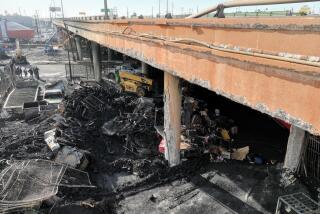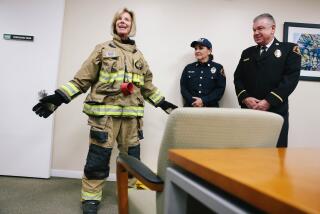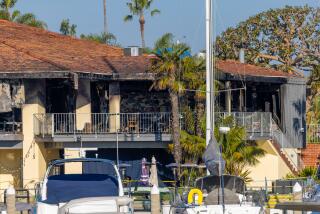Coast Guard repeatedly rejected calls for tougher fire safety rules for small boats
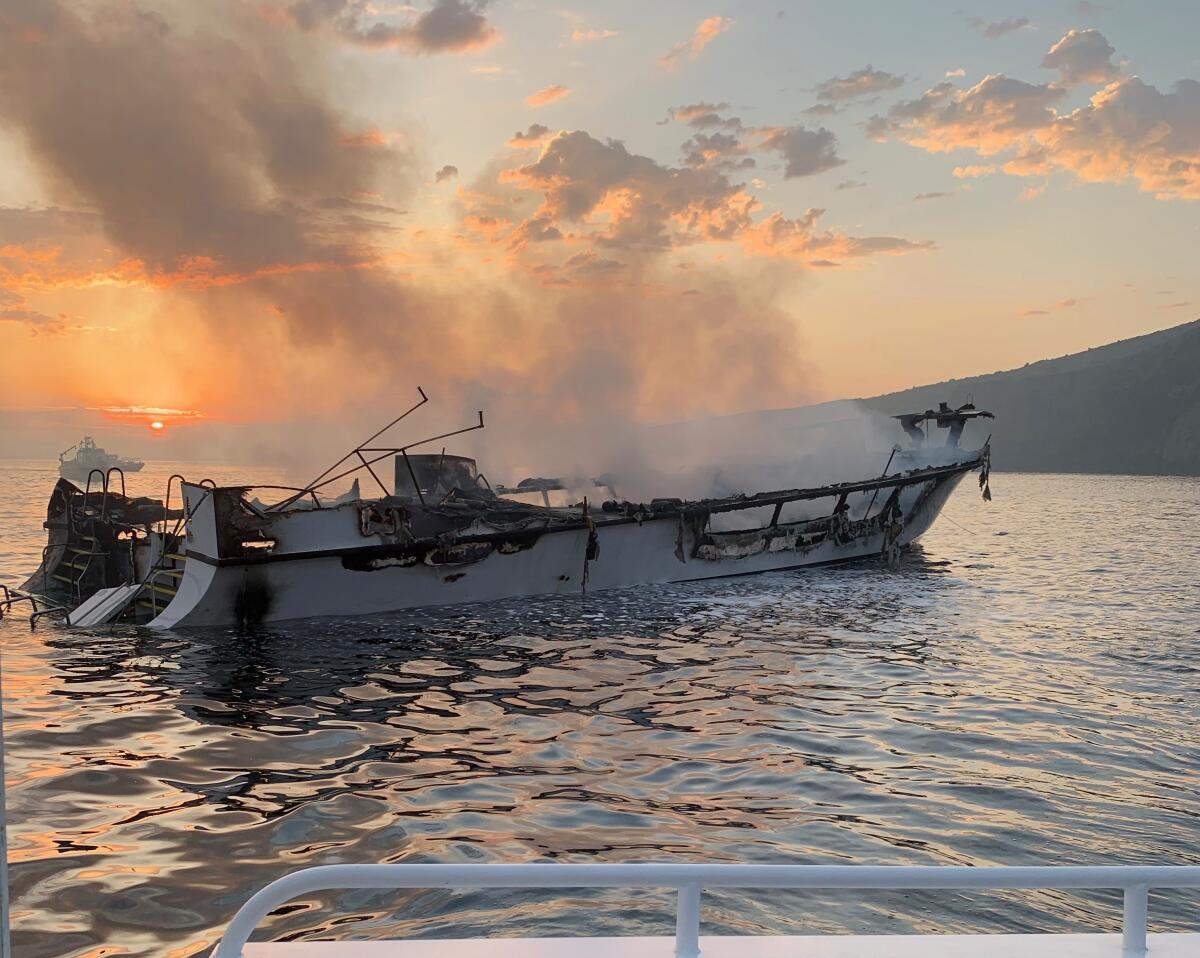
The Conception dive boat accident that killed 34 people on Labor Day was one of the worst maritime disasters in California history, but the safety lapses that led to it were hardly unprecedented.
For years, small passenger vessels have gone up in flames for a variety of reasons, prompting repeated calls by the National Transportation Safety Board to improve fire-safety measures.
But a Times review of federal documents spanning nearly 20 years shows that the U.S. Coast Guard, which has the sole authority to mandate safety measures, has often rejected the board’s recommendations.
The NTSB found that issues such as an electrical malfunction, a poorly maintained fuel line and a failed cooling pump had caused fires aboard small vessels over the past 20 years. But the safety panel also concluded that a lack of preventive maintenance and fire training for crew members had contributed to the blazes.
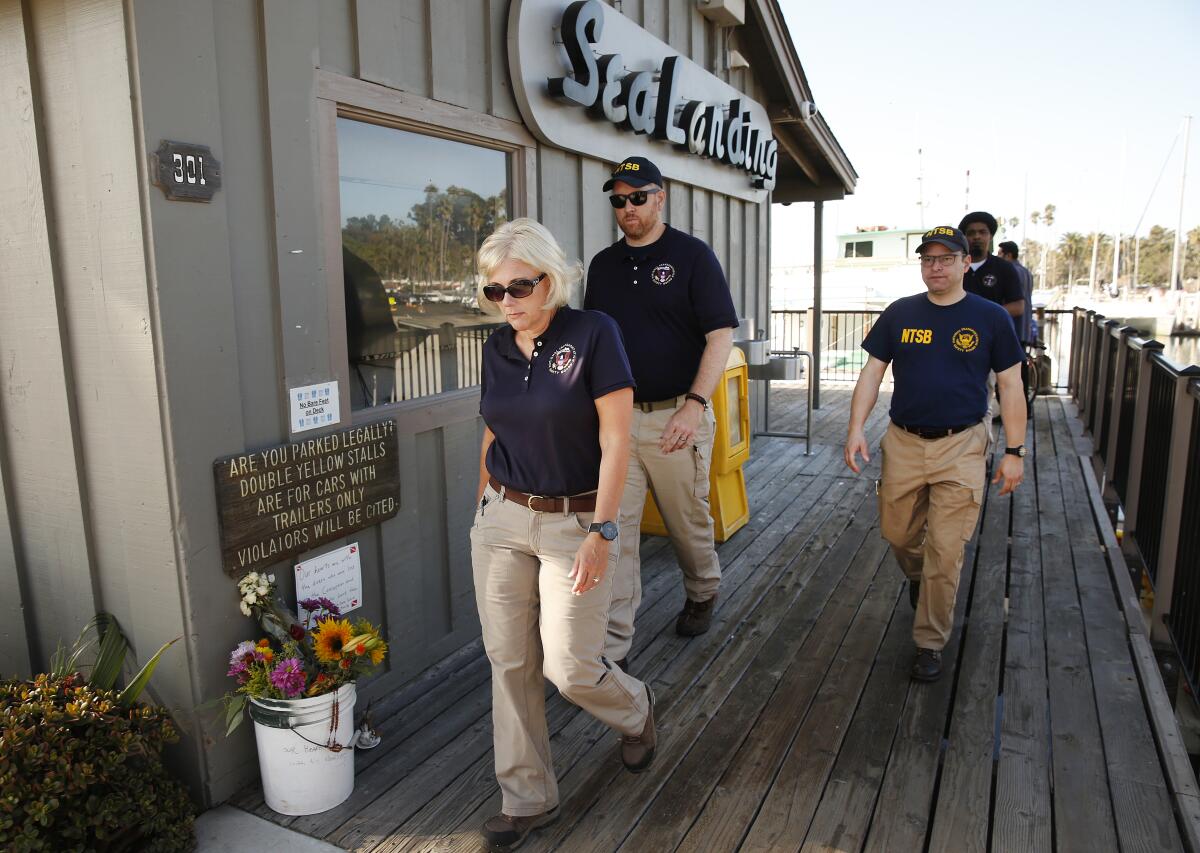
It repeatedly has called on the Coast Guard to require small vessels to establish procedures for conducting regular inspections and reporting maintenance and repair needs for all of a boat’s systems — including the hull and mechanical and electrical operations. This, the NTSB said, would better ensure safety on vessels between Coast Guard inspections, which occur every one to two years.
But the Coast Guard has pushed back on the recommendation, calling it “unnecessarily burdensome and duplicative of existing requirements.”
The NTSB, an independent federal agency, has no authority enforce its recommendations, so regulators such as the Coast Guard and the Federal Aviation Administration are not bound by them.
Last year, after a deadly boat fire in Florida, the NTSB said the incident might have been prevented had the Coast Guard required small boats to have a preventive maintenance program.
“All over the country this morning, crew training is either being conducted, or it is being neglected. Manufacturers’ recommended maintenance programs are being followed or they are being disregarded, leaving the safety of vessels and their passengers at risk,” NTSB Chairman Robert Sumwalt said in December 2018.
In September, a fire broke out on the Conception during a weekend diving excursion in the Channel Islands, killing everyone who had been sleeping below deck. Since the accident, investigators have cited some of the same deficiencies pointed out by the NTSB in other boat fires: lack of crew training and inadequate safety measures and maintenance.
A preliminary NTSB investigation found that the Conception had violated a requirement that it have a roving watch during the night, saying the five crew members who survived awoke to discover the flames. The agency also has raised concerns about the functionality of the two exits in the area where passengers slept in stacked bunks beneath the waterline.
Even so, the Conception passed Coast Guard inspection, a fact that some say underscores the problem.
“Yes, it complied with all the Coast Guard regulations, but that didn’t mean it was safe,” said John McDevitt, a former assistant fire chief and chair of a National Fire Protection Assn. committee on boat fire protection. “A string of recommendations have been ignored about early warning systems, detection and training.”
An official with Truth Aquatics, which owned the Conception, did not respond to a request for comment.
Since the fire, the Coast Guard has issued warnings about charging lithium batteries on boats, cracked down on the number of bunks on vessels and demanded some exits be expanded and made more accessible. Hundreds of boats like the Conception have been reinspected. Some were told to make fixes before heading out to sea again.
The results from the NTSB investigation into the Labor Day disaster could take 18 months to complete. Agents from the FBI and the Bureau of Alcohol, Tobacco, Firearms and Explosives are trying to determine what sparked the blaze.
Still, a growing belief throughout the boat industry is that the Conception fire could finally lead to safety rules that the NTSB has been proposing for years.
The Coast Guard declined to comment on why it had not followed specific NTSB recommendations, but released a statement defending its actions.
“The Coast Guard highly values NTSB’s input and recommendations concerning all marine casualty investigations, and we work closely with them to identify ways to improve the safety of the maritime industry,” chief spokesperson Lt. Amy Midgett said in a statement. “When NTSB makes recommendations, the Coast Guard carefully considers the proposed measures and is required to weigh the benefits and impacts of implementation.”
The laws governing the high seas stem from the era of passenger steamships, when tragedy heightened awareness for boat safety. The Coast Guard regularly inspects commercial vessels carrying six passengers or more and certifies that they meet federal standards.
In the last 19 years, several fires erupted on ferries and passenger boats that led the NTSB to make numerous safety recommendations for smaller vessels. But the Coast Guard has not implemented many of them, and rejected some.
In November 2000, an electrical malfunction caused the Port Imperial Manhattan to burn as the ferry headed to New Jersey from Manhattan. None of the eight people on board was hurt.
An NTSB report concluded that inadequate inspection and maintenance of the electrical system, as well as insufficient fire detection systems and crew training, all contributed to the blaze. The board warned of the need for a preventive maintenance program and proper fire training.
The Coast Guard pushed back, arguing that “small passenger vessels are subject to a comprehensive set of regulations that are designed to promote vessel safety.”
To this day, the NTSB file notes that its recommendation has not been fulfilled. The file is marked “Open — Unacceptable Response.”
In the years that followed, according to a 2006 NTSB report, a series of preventive maintenance failures led to fires on similar vessels.
In 2010, Congress approved the Coast Guard Authorization Act, requiring that it set rules to mandate safety management systems. But the Coast Guard has concentrated on larger ships, not smaller passenger vessels.
The conflict between the NTSB and the Coast Guard reached such a point that in 2016, the safety board — in a letter — scolded the Coast Guard for failing to adopt 25 of 40 safety recommendations. The next year, the NTSB again chastised the Coast Guard for what is said was a delay in instituting safety rules.
Not long afterward, in January 2018, a fire erupted on the 72-foot Island Lady off the Florida coast. Fourteen passengers on the casino shuttle boat were injured. One person died.
The vessel, the NTSB concluded in December, had erupted in flames because a lack of preventive maintenance had led to pump failure and engine overheating. The agency identified several shortcomings in maintenance schedules for the boat’s systems and said the owners had failed to install fire detection equipment in unmanned spaces.
The NTSB could find no record of the last time the crew tested the heat detectors, and it said the Coast Guard inspection didn’t detail whether the fire detection system had been checked. The captain said the system had been tested, but the files were lost in the fire.
The board faulted the Coast Guard for failing to adopt a preventive maintenance program.
“This is just absurd,” NTSB Chairman Sumwalt said during a two-hour hearing
Like the Conception, the Island Lady had passed Coast Guard inspections. A 2015 examination of the fire detection system found it “satisfactory.”
“All of the Coast Guard’s regulations are written in blood,” Richard Hiscock, a former congressional staffer who helped shape maritime policy, said. “They are the result of deadly disasters on the high seas.”
While boat operators across Southern California said they expect the NTSB to issue a slew of new recommendations in the wake of the Conception tragedy, the Passenger Vessel Assn. — which represents hundreds of mid- and large-size boat operators nationwide — has tried to distance itself from the incident.
“PVA member vessel companies are not involved in overnight diving operations such as the Conception,” a statement said. “This company is not a PVA member.”
The organization, however, did distribute the Coast Guard’s September safety bulletin that urged operators to review emergency training and the condition of passenger accommodations. The bulletin also warned about limiting the unsupervised charging of lithium-ion batteries, power strips and extension cords aboard vessels.
The trade group told its members to expect the Coast Guard to step up inspection of vessels with overnight accommodations, focusing specifically on fire safety, vessel operations and safety management.
For decades, however, the Coast Guard’s oversight process has come under official scrutiny.
After the 1993 loss of the El Toro II fishing charter with 23 people aboard and the drowning of 13 people in 1999 aboard the Miss Majestic duck boat, the Coast Guard’s highest-level inquiry found that its inspectors had lacked necessary knowledge and had failed to notice critical missing parts on the vessels.
And after the 2010 Deep Water Horizon oil rig explosion left 11 dead and spilled about 206 million gallons of oil, a Department of Homeland Security Inspector General’s report found the Coast Guard did not have “adequate processes to investigate, take corrective actions and enforce federal regulations related to the reporting of marine accidents.”
The report blamed it partly on the Coast Guard’s inability to retain personnel.
In 2018, Rear Adm. John Nadeau, then the Coast Guard assistant commandant for prevention policy, testified that 1,000 more inspectors and inspections would not solve the issues.
“This problem involves training,” he said. “This problem involves getting the right information. This problem involves getting the right policy and procedure in place.”
To address the problem, some members of Congress have pushed for marine safety to become a separate agency — much like the Federal Aviation Administration. The Coast Guard is part of the U.S. Department of Homeland Security.
Last month, top Coast Guard leaders in Washington, D.C., ordered inspectors across the country to re-examine vessels that accommodate from seven to 150 overnight passengers — many of which are old and have been modified to handle different types of excursions like diving, fishing or sailing charters.
In California alone, that is 152 vessels.
“We need to make sure everybody is crystal clear on what is required,” U.S. Coast Guard Lt. Cmdr. Matt Kroll said. “We are going through these with a fine-tooth comb. There is a very specific checklist.”
The Coast Guard, he said, expects the NTSB to make new safety recommendations within 18 to 24 months.
Numerous operators from Santa Barbara to San Diego told The Times that as many as four inspectors had scrutinized nearly every inch of their boats.
Besides fire training and fire hoses and smoke detectors, the owners said, inspectors are scrutinizing paperwork to check whether companies test employees for drugs. Investigators are also focusing on the number of bunks below deck, mattress pads to make sure they’re fireproof and whether emergency hatches are wide enough.
“If there was anything that got missed, it was the needle in the haystack,” said Joe Chait, who owns the 65-foot Pegasus fishing boat in San Diego.
Ted Cumming, owner of Spectre dive boat in Ventura County, said inspectors determined that double bunks without an open space on either side needed to be single bunks. Inspectors also told him that a water-sealed door needed to be widened from 20 inches to 24 inches, he said.
“They are really beefing up the inspections and rules,” Cumming said. “They checked everything and anything.”
Times staff writer Leila Miller contributed to this report.
More to Read
Start your day right
Sign up for Essential California for news, features and recommendations from the L.A. Times and beyond in your inbox six days a week.
You may occasionally receive promotional content from the Los Angeles Times.
